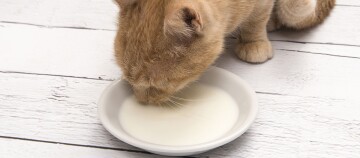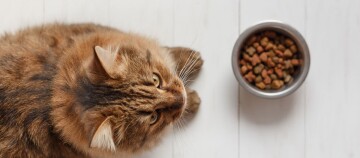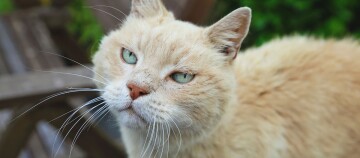Plants Not Suitable for Cat Consumption and Highly Toxic to Cats
07.10.2022 - Reading time: 5 minutes
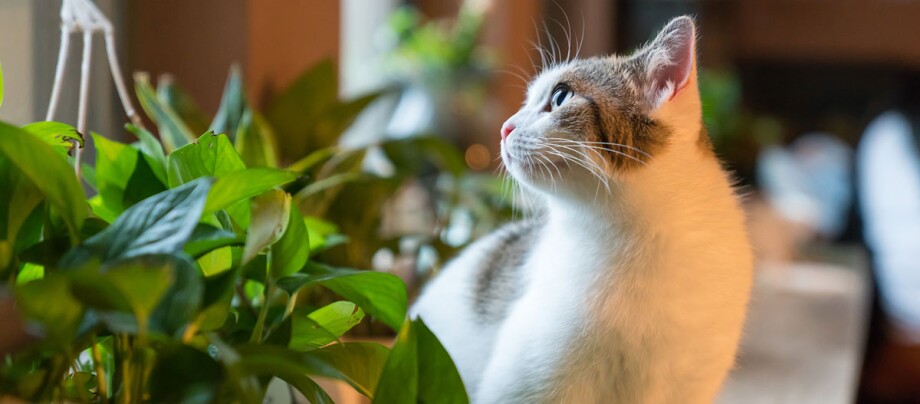
There comes a time in life when many a cat lover should abandon his dream of having a lush winter garden. The reason: an astonishing number of cats are devoted to "vandalising" plants during inquisitive play. Even bouquets of flowers are not safe from many cats. Plants, especially those with tendrils and filigree leaves, are irresistibly attractive to many a cat and are pawed at - or tested out as snacks. The latter in particular can be fatal: A large number of plants are not suitable for consumption and are highly toxic to cats. Kittens are particularly at risk if they are inexperienced and want to test everything with their sense of taste. Find out here how to prevent your house cat from getting hurt while exploring the indoor jungle.
Why do cats eat plants?
Cats have an instinctive, natural need to eat plants. Feral cats and outdoor cats consume grass and herbs in order to be able to cope better with hairballs. These balls of hair swallowed during grooming – called “bezoars” – are regularly regurgitated. And this is made easier once their structure has been strengthened by plant fibres. Grass thus acts as a natural emetic. An indoor cat, in contrast to an outdoor cat, has no way of instinctively looking for grass to nibble on and will therefore make do with anything that might have a similar effect. If it then only finds indoor plants, it usually has no other choice to meet its need.
How to give your cat a green alternative
For this reason, it is extremely important for you to provide your cat with a flower pot containing cat grass, to which it can help itself. Seed mixtures or ready-made kits for growing cat grass are available in garden centres and pet shops, and sowing is simple. This way you can offer your cat fresh greenery even in winter. In the event that you have a much-loved plant in your home or garden, or the risky plant cannot be removed for other reasons, the cat must be prevented from reaching the tempting greenery. Try to position the plant out of reach of the cat as far as possible or block the way to it. If necessary, build a fence out of suitable material around the plant or place angular stones on the substrate.
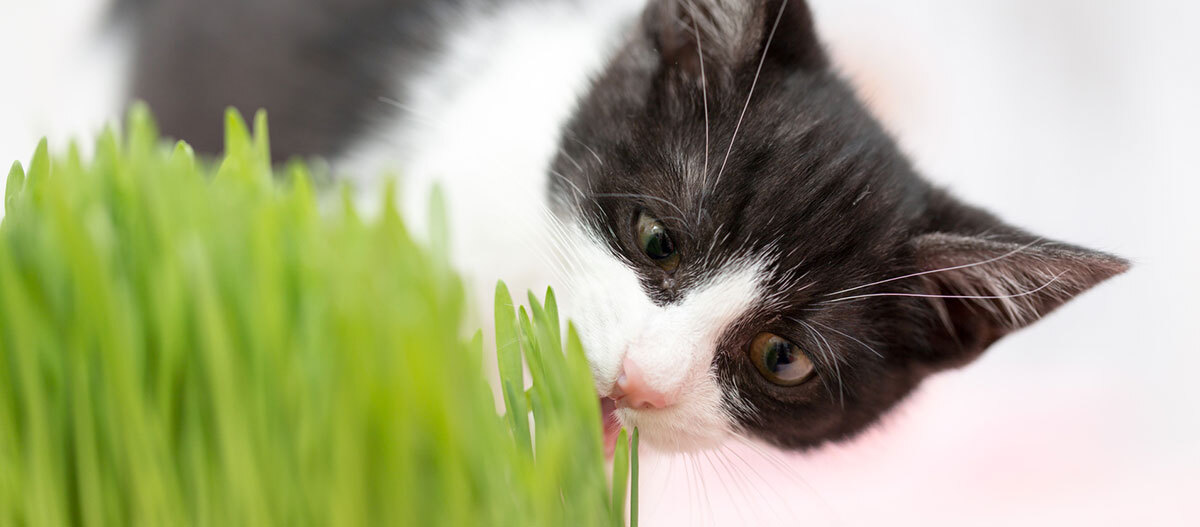
Which plants are poisonous to my cat?
As a human plant lover without in-depth botanical knowledge, you don’t usually consider the toxicity of plants. Ultimately, you would never think of eating your ornamental plants, not to mention that few plants are poisonous in all their parts. Sometimes the poison is concentrated in the tuber, sometimes in the leaves, flowers, fruits or sap.
Cats (and small children), unlike many herbivorous animals, do not instinctively distinguish between edible and poisonous. For this reason, a cat-safe household must protect your house cat from any temptation to nibble on poisonous plants.
Some common poisonous houseplants for cats are for example
- Poinsettia (Euphorbia pulcherrima)
- Azalea (Rhododendron simsii)
- Weeping fig (Ficus benjamina)
- Dragon tree (Dracaena deremensis)
- Desert rose (Adenium obesum)
- Amaryllis (Hippeastrum)
Particular care should be taken with these plants:
- Triangular spurge (Euphorbia trigona): The decorative, columnar cactus-like plant can serve as a scratching post; the milky sap that it excretes is poisonous.
- Tulips (Tulipa ssp.): With cut flowers, both the plant and the water inside the flower vase pose a danger should the cat drink it.
Although cacti are not poisonous to cats, they certainly pose a danger. Even if the cat instinctively avoids the prickly fellows after first contact, there is still a risk of injury – for example, if they do not pay attention to where they are jumping in their eagerness to play or when frightened.
Outdoor cats will inevitably come across widespread flowering and hedge plants when roaming through gardens and parks.
Examples of flowering and hedge plants:
- Begonias (Begonia ssp.)
- Oleander (Nerium oleander)
- Yew (Taxus baccata)
- Holly (Ilex aquifolium)
- Box wood (Buxus sempervirens)
On a broader scale, poisonous plants in the garden and kitchen also include vegetables forbidden to cats, such as cabbage, legumes, onions, grapes (and sultanas!) and avocado.
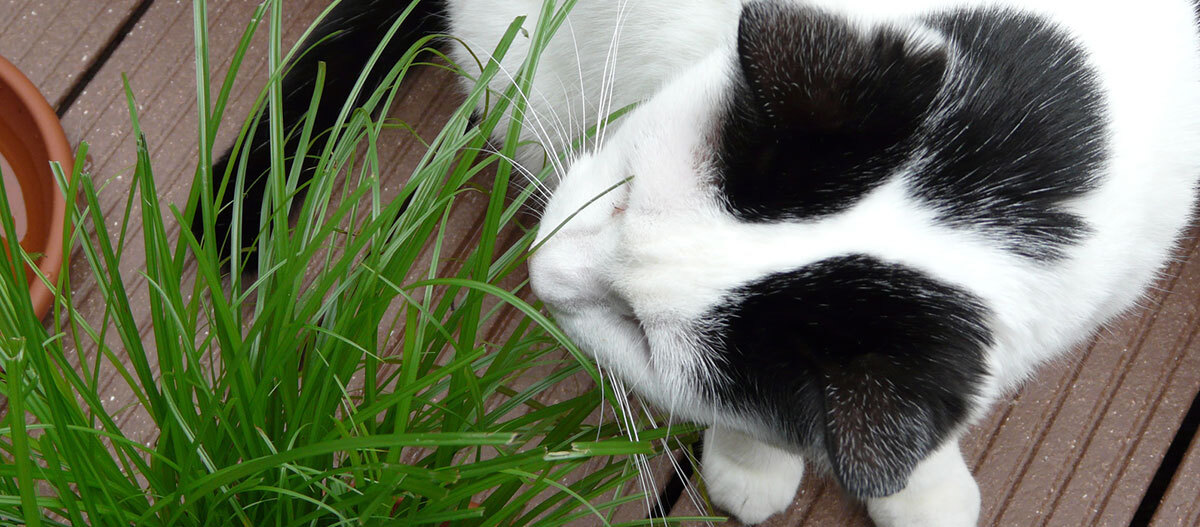
What should I do if my cat has been poisoned by a plant?
Fortunately, poisoning by houseplants is rather rare. Plants are generally rather uninteresting, especially for outdoor cats, as they are not part of the natural food spectrum. Poisonous plants for cats are more likely to be found in the living area, where the animal can come into closer contact by circumstance.
Symptoms that may indicate poisoning include:
- vomiting
- dilated pupils
- heavy salivation, foaming at the mouth
- diarrhoea or constipation
- shaking, staggering, cramps
- weak pulse
- slow, strained breathing
- drowsiness
- central paralysis
- heart and circulatory collapse
If you suspect poisoning or notice the ingestion of poison before acute symptoms appear, there is no time to lose: The cat must be taken to the vet immediately. Do not try to make the animal vomit yourself! The doctor has special medication for this purpose. He will also take further measures to stabilise and detoxify the animal. If you are unable to get hold of a vet, contact the local animal emergency services or the emergency aid. They will give you competent instructions on first aid measures.
Which non-hazardous plants can I keep at home and in the garden without having to worry?
Even as a cat owner, you do not necessarily have to dispense with a beautiful garden or houseplants.
For example, you can create a decorative and cat-safe welcome to your home with:
- Christmas cactus (Schlumbergera)
- Chinese lantern (Abutilum)
- Hibiscus (Hibiscus rosa sinensis)
- Pigmyweed (Crassula)
In the outdoor garden you can plant geraniums (Perlagonium), jasmine (Jasminum) or Cyprus grass (Cyperus alternifolium) without any concern. Seek advice at a garden centre: There is a large selection of plants suitable for cats! By the way, you can bring great joy to your house cat with a pretty herb: catnip (Nepeta cataria)!
